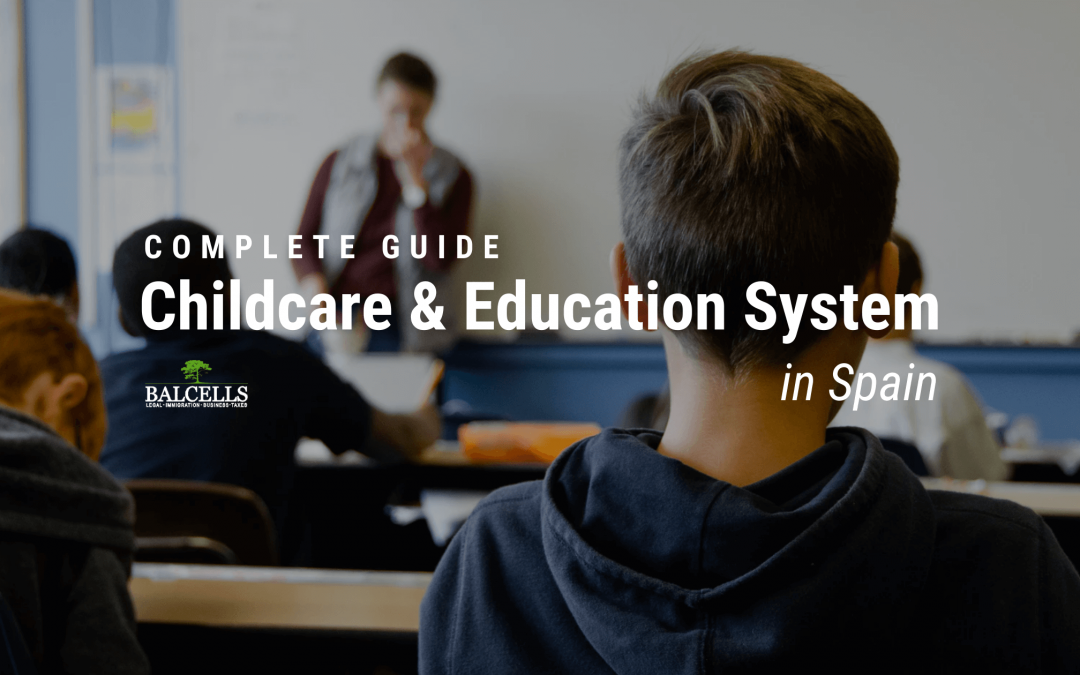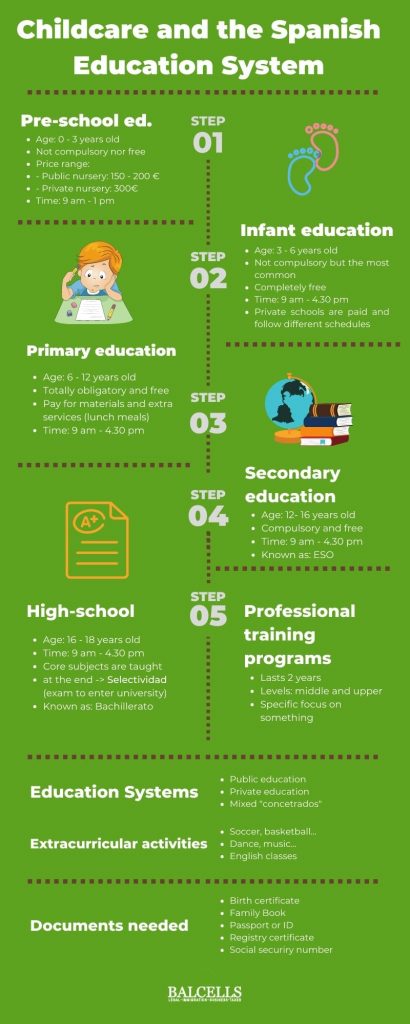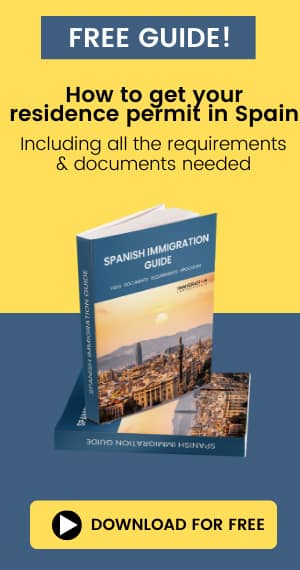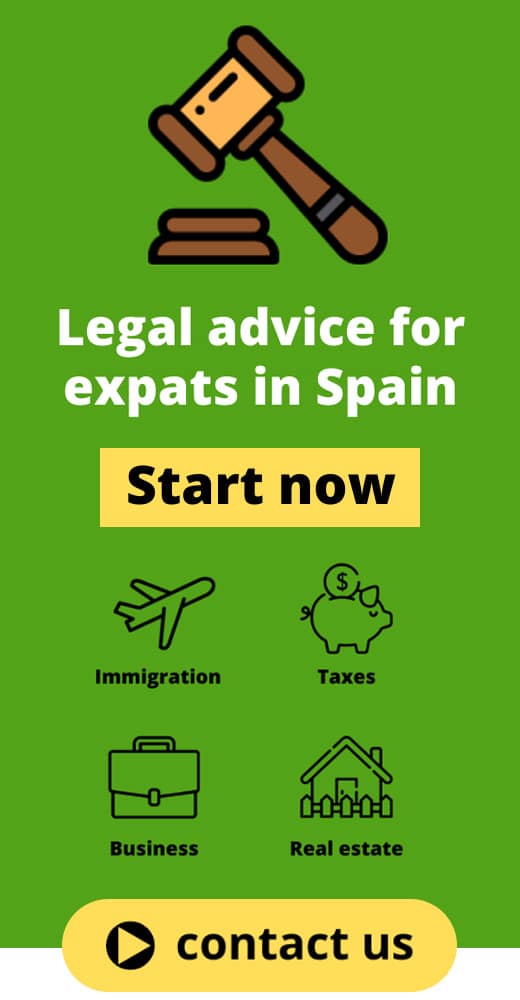If you are a foreigner thinking about starting to live in the Spanish territory, the school your children will go to is one of the factors you should first take into account when making your decision. Understanding how the educational system works in Spain will be fundamental, and the range of schools available should be a priority when choosing the city where you will settle in with your family. Therefore, in this article you are about to get an overview of childcare in Spain, including very useful tips that will help you choose the perfect school, nursery or high-school!
How does the educational system work in Spain?
Let’s start with the basics. How does the education system work in Spain and how is it organized?
It’s pretty simple. It is structured in different phases or stages, which vary according to the age of the child. Some of these stages are completely free (you don’t need to pay anything) while others are not.
Let’s look at each one of them in chronological order:
Pre-school education
From 0 to 3 years old children can enroll in what is known as early childhood education or preschool. This schooling is not compulsory, but neither is it free (it is the only educational stage parents must pay for in Spain).
When can you enroll your children in a daycare center or kindergarten?
Once the child becomes 16 weeks old (never before). And in fact, taking your children to a nursery center is a very common thing to do in Spain, especially since both parents usually work and do not have time to take care of the smallest ones in the house.
Although it is true that there are public kindergartens (with about 20-25 children per class), those are still paid options. Of course, they are a cheaper alternative when comparing with private kindergartens, although in many cases there is not much difference when it comes to price.
However, for the same price, these nurseries usually include lunch.
In Spain, Barcelona leads the ranking of communities with the most expensive public kindergartens, followed by Valencia and Zaragoza.
You can expect to pay between 150 and 200 euros for a public nursery (depending on your income level), and around 300 euros per month for a private one.
What are the schedules like? The usual schedule is from 9 am to 1 pm; although it is possible to pay an extra for the child to stay there and eat until 5 pm. In those cases, and as long as we are talking about a private kindergarten, the monthly price would be even higher.
However, there are certain aids from the government through a discount on income tax, which can be up to 1,000 euros per year if the mother works and needs to take her son or daughter to the kindergarten.
As a general rule, nurseries, kindergartens, and preschools are of high quality. However, many parents opt for the services of a nanny. These babysitters are usually young people up to the age of 30 who temporarily take care of the children. There are all kinds of nannies, and it is even possible to find bilingual ones.
If in doubt, take your children to a kindergarten, and not only because of the quality of this education in the country. But also because it will be a great opportunity for your kids to start learning Spanish when they are more predisposed to do so, as well as to be able to socialize with the rest of the children (something fundamental for their development).
Infant education
The next stage of education goes from 3 to 6 years old, and is the second stage of infantile education, studied in the so-called “parbularios” in Spanish.
Again, this educational stage is not compulsory, but the vast majority of children do enroll in school at the age of 3, especially out of necessity: both parents work and cannot take care of them at home, but mainly due to the socialization with their peers and the fact that they are able to receive an education from a professional as soon as possible.
The main upside is that this education is completely free.
As for the schedule, it goes from 9 am to 4.30 pm approximately, with 2 hours for lunch at noon. During this lunchtime, there are 2 different options:
- Leaving your children at school so that they can eat school meals in the canteen
- Picking them up at 12.30 approximately so they can eat at home
*Private schools follow different schedules, so you would need to check with each one.
Primary education
From the age of 6 onwards, education becomes totally obligatory. And, again, it is completely free.
This next educational stage (primary school) lasts 6 years.
The only things parents have to pay for are the school materials and extra services contracted, such as school meals, kindergarten in the morning, or extra care at the end of the school day (just offered only in some centers).
In order to help parents who are in a difficult financial situation, there are scholarships for the purchase of school books, for school meals, and for morning extra services. These scholarships will depend on the economic situation of both parents.
You can find all the different scholarships that the government grants here.
Sencondary education
Once the 6 years of primary education have been completed, the children begin what is known as compulsory secondary education or ESO (“educación secundaria obligatoria”).
This is an educational stage that lasts 4 years, is also free, and represents the last really obligatory courses for any student in Spain.
At the age of 16, once they have finished the ESO, these students must make a decision: either to continue studying at high-school in what is known as “bachillerato”, or to specialize in a specific profession through the different professional training programs available.
High-school (“Bachillerato”)
In the majority of the cases where the student wants to study a university degree, she will start high school (called “bachillerato” in Spanish), after finishing the ESO.
This is a stage that lasts 2 years, from 16 to 18 years old.
Core subjects are taught there (generic for all) such as history or English, but with some specific subjects according to the modality chosen, because there are different types of baccalaureates, and the student must choose whether to take one or another: the social one, technological, scientific, humanistic.
Here the student already begins to specialize (although in a very generic way), and according to the career that he wants to study, one baccalaureate will be more or less useful, especially when considering the required score for accessing university.
After finishing these 2 years of high school, the student must pass an entrance exam to be able to enter university. This exam is called “selectividad“.
The average grade obtained both in the two years of high school and in this access test will be what defines whether or not the student can enter the chosen career and university.
Professional training programs or “FP”
However, there are many students who, instead of opting for a high school diploma and a career later on, decide to start specializing at the end of the ESO in order to work as soon as possible.
In this case, they will begin what is known as “FP” (formación profesional) or professional training.
There are two different levels: middle and upper, each lasting 2 years.
These training cycles are focused on people who clearly know what to do with their lives and want a job asap, such as cooks or computer technicians.
These programs offer a quicker way out to the corporate world (as soon as you finish the middle program you can start working), although it is true that many students decide to continue their education and even decide to enter university.
Educatio systems
In Spain there are three different educational systems.
Obviously, there are many differences between each of them. Nevertheless, all schools, nurseries and high-schools in Spain are required by law to teach the same content, as this is something that is determined by the central government. So in that sense you will not find any difference as far as the information to be received.
However, the methodology used to teach such content can be quite different, and that becomes the differential factor that makes you choose one option or the other.
In addition, as a general rule, all schools in the country (and at all educational levels) work hard on being as inclusive as possible from an early age, and encourage diversity, so foreign children usually have no problems integrating with their peers.
*Keep in mind that home schooling is not legally permitted in Spain.
State education or public education
The first type of education is public education, controlled by the Spanish Government and offered free of charge.
The reality is that the quality of public education in Spain, as well as the quality of all public school facilities, is more than decent and of a high standard. Students never lack any kind of material, and all the different buildings and classrooms are usually new and taken care of regularly.
Therefore, choosing public education is synonymous with providing a good education and care for your kids, while at the same time saving money every month since it won’t cost you anything.
Most educational centers are bilingual, which means that classes will be given in Spanish, and there will be on subject which is English (as a language). However, if you are in living in any region that has its own language, such as in Catalonia, then the vat majority of classes will be taught in Catalan, including Spanish and English as subjects.
In public schools, secularism is the rule, with no incidence of religion in education, although Christian traditions are respected (with vacations at Christmas and Easter). However, there can be a specific subject to make children understand which are the different religions of the world, but always promoting a critical and objective point of view.
Another positive aspect of public education is that teachers are in continuous training, hence you will be able to find perhaps more prepared professors.
Private education
At the complete opposite spectrum of the public one we find private education. The main difference here is its cost: prices start at 500 euros per month and can go up to 2000 euros.
However, that price may be justified.
Private schools tend to try to be much more innovative, especially since they receive extra income each month from parents (as the monthly payment). Hence, as they have a greater margin and investment opportunities, they tend to implement new technologies and incorporate more advanced methods that require a larger budgets.
In addition, you find a wider range of schools to choos, based on different parameters that may be important to you as a parent.
For example, you can find completely religious schools where Christian values are taught.
Or, on the other hand, you may decide to enroll your children in a school that uses the British, French or German system (for example), with most classes taught in the respective languages (along with Spanish as a subject). This can be a good alternative to foster a more complete professional profile for your children at the language level.
Mixed or “centros concertados”
Between public and private education we find the what is called “colegios concertados“, in which parents pay a monthly fee, but the government still finances part of the school, so the monthly payment is much lower.
This fee can be around 100-200 euros per month (not including the school meals).
These schools also have a little more margin for investment in education and new technologies, but obviously not as much as private schools.
It is also possible to find educational centers here with a more religious approach.
Extracurricular activities
There is no doubt that extracurricular activities are one of the complements that will help your children receive the most complete education possible, developing their profiles and enabling them to grow in other equally important areas not taught in school.
Afterschool activities not only do allow them to deepen and learn concepts that they would never see in a normal classroom, but they are also a great opportunity for your kids to socialize and make new friends.
Thus, schools in Spain offer many different extracurricular activities, which is really positive since it is not necessary to look outside in other institutions.
Most children opt for sports such as soccer or basketball. Others tend more towards the arts and dance.
However, it is also very common to sign children up for extracurricular activities of a more academic nature such as English classes.
But the offer of activities doesn’t stop growing. Recently, many children have also begun to sign up for activities related to robotics and technology, and we can even find after-school cooking activities.
Documents and requirements for enrollment
When enrolling your children in a nursery or general school, one of the most important requirements you must consider is that the center chosen should be close to your address or home.
On the other hand, it is not 100% necessary to have a residence permit for the child to study. Why? As education is compulsory in the country, this documentation is not required so that education is fully guaranteed.
However, as parents, you must provide a series of documentation, which consists of:
- Identification document of the minor: birth certificate to prove who the parents are
- Family book
- Document with which the children and parents have entered the country (passport, ID card, etc.)
- City hall registry certificate or “padrón” to determine which school corresponds to the child. You can find out how to get it here.
- A certificate with social security number just in case anything happens to the child and he or she needs medical assistance.
Keep in mind that not all schools ask for the same requirements, but those seen in this section are the most common ones.
Furthermore, it is not necessary for parents to be legal residents in Spain if they want to enroll their children in school, they only have to be registered in the townhall in which they live, and provide this certificate or census so that the school has the address written down in case any incident happens.
School calendar and important dates
The school year normally begins the first or second week of September and ends in mid or late June.
The months of July and August are holidays for kids, also including that small part of June and September. So yes: students in Spain have a lot of free time during summer.
At the beginning of the year, schools usually open their doors to parents, and it is possible to visit the building to discover its facilities before enrolling your children (something we strongly recommend you do).
Usually, it will be during the months of April and May that you enroll your child for the next academic year; although if you arrive late it is still possible to find a spot. You should then check the availability of the school you are interested in.
Tips for choosing the best school for your children in Spain
To finish exploring the childcare system in Spain, let’s see what are the most useful tips that will help you find the ideal school for the education of your children:
- First of all, don’t settle for the first option you find. Visit different nurseries, kindergartens, schools, and institutes before taking a decision and finally enrolling your children. Visit them during the “open days” or request a private tour to the school to see the facilities, generating an idea of their infrastructures and what it really feels like studying there.
- Study the educational objectives of the center, its projects, and programs. This is very useful and relevant information that you can find on each school’s website.
- Analyze the teaching staff and professors. Obviously, the older the teacher the more experience they have, but a young teaching team is synonymous with more motivation. In addition, having just one teacher per classroom or having two is also a detail that can make a huge difference.
- Another point to consider is the level of technology available in each calss. Do students have laptops/ipads? Is a projector used in class?
- Try to make sure that the learning method used is functional and useful for everyday life, in which the child is the protagonist of the learning process, getting involved as much as possible, and that the teacher becomes just a companion of that learning.
- If you are looking for an international school, you can find help at the British Council for English schools, at the Goethe Institute for German, or at the Alliance Française for schools with a French system.
- Ask other foreigners who have been in your situation and find out where they have taken their children. The testimony of other parents is the best indicator of the quality of the school, since you will know how happy they are. You can find hundreds of communities of foreigners to ask on Facebook groups.
If you have any doubt or need our team of lawyers to provide legal assistance on any matter, we are at your complete disposal!
Book a consultation with one of our lawyers and solve all your doubts:




